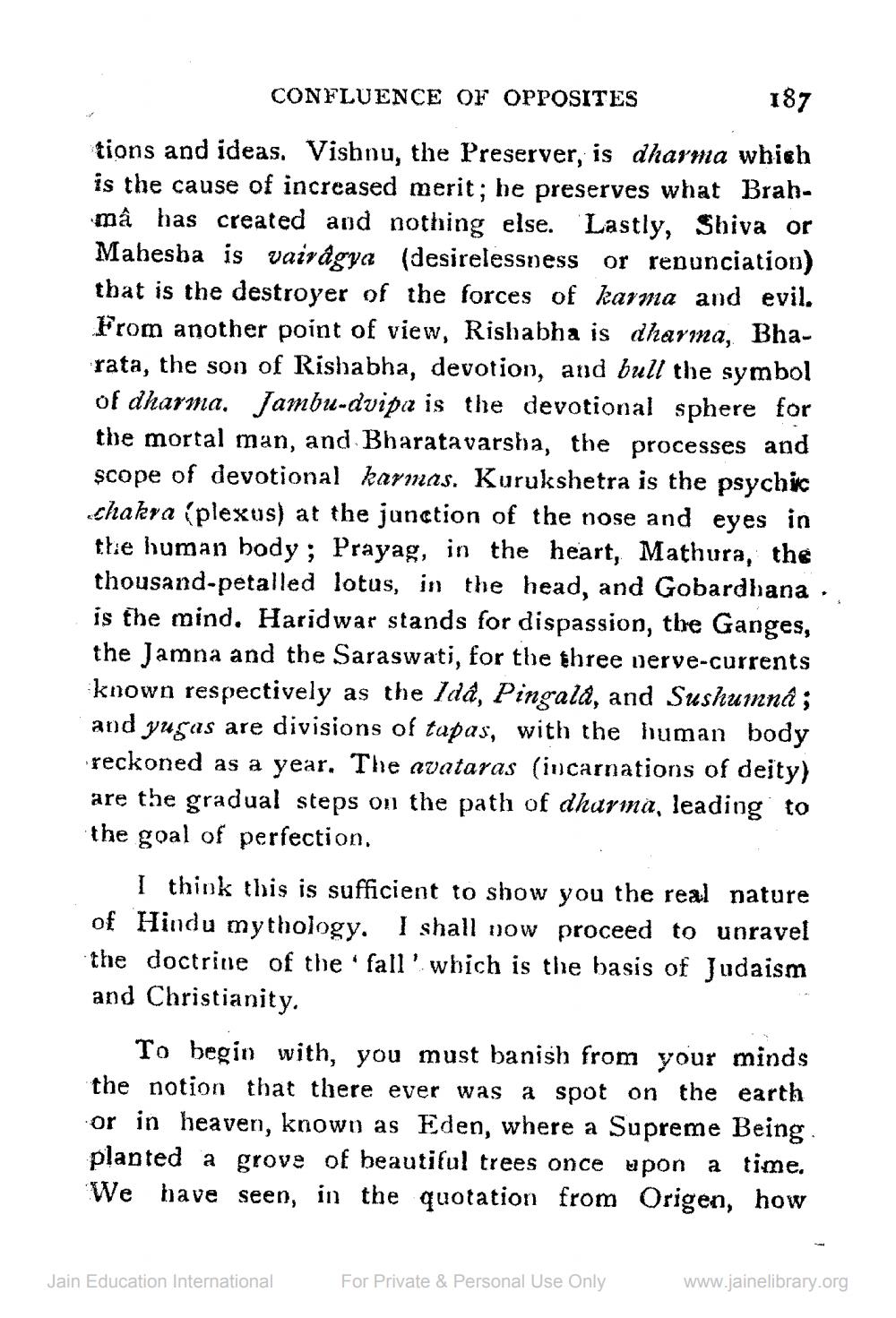________________
CONFLUENCE OF OPPOSITES
187
tions and ideas. Vishnu, the Preserver, is dharma which is the cause of increased merit; he preserves what Brahmâ has created and nothing else. Lastly, Shiva or Mahesha is vairagya (desirelessness or renunciation) that is the destroyer of the forces of karma and evil. From another point of view, Rishabha is dharma, Bharata, the son of Rishabha, devotion, and bull the symbol of dharma. Jambu-dvipa is the devotional sphere for the mortal man, and Bharatavarsha, the processes and scope of devotional karmas. Kurukshetra is the psychic chakra (plexus) at the junction of the nose and eyes in the human body; Prayag, in the heart, Mathura, the thousand-petalled lotus, in the head, and Gobardhana. is the mind. Haridwar stands for dispassion, the Ganges, the Jamna and the Saraswati, for the three nerve-currents known respectively as the Ida, Pingala, and Sushumnâ; and yugas are divisions of tapas, with the human body reckoned as a year. The avataras (incarnations of deity) are the gradual steps on the path of dharma, leading to the goal of perfection.
I think this is sufficient to show you the real nature of Hindu mythology. I shall now proceed to unravel the doctrine of the fall' which is the basis of Judaism and Christianity.
To begin with, you must banish from your minds the notion that there ever was a spot on the earth or in heaven, known as Eden, where a Supreme Being. planted a grove of beautiful trees once upon a time. We have seen, in the quotation from Origen, how
Jain Education International
For Private & Personal Use Only
www.jainelibrary.org




